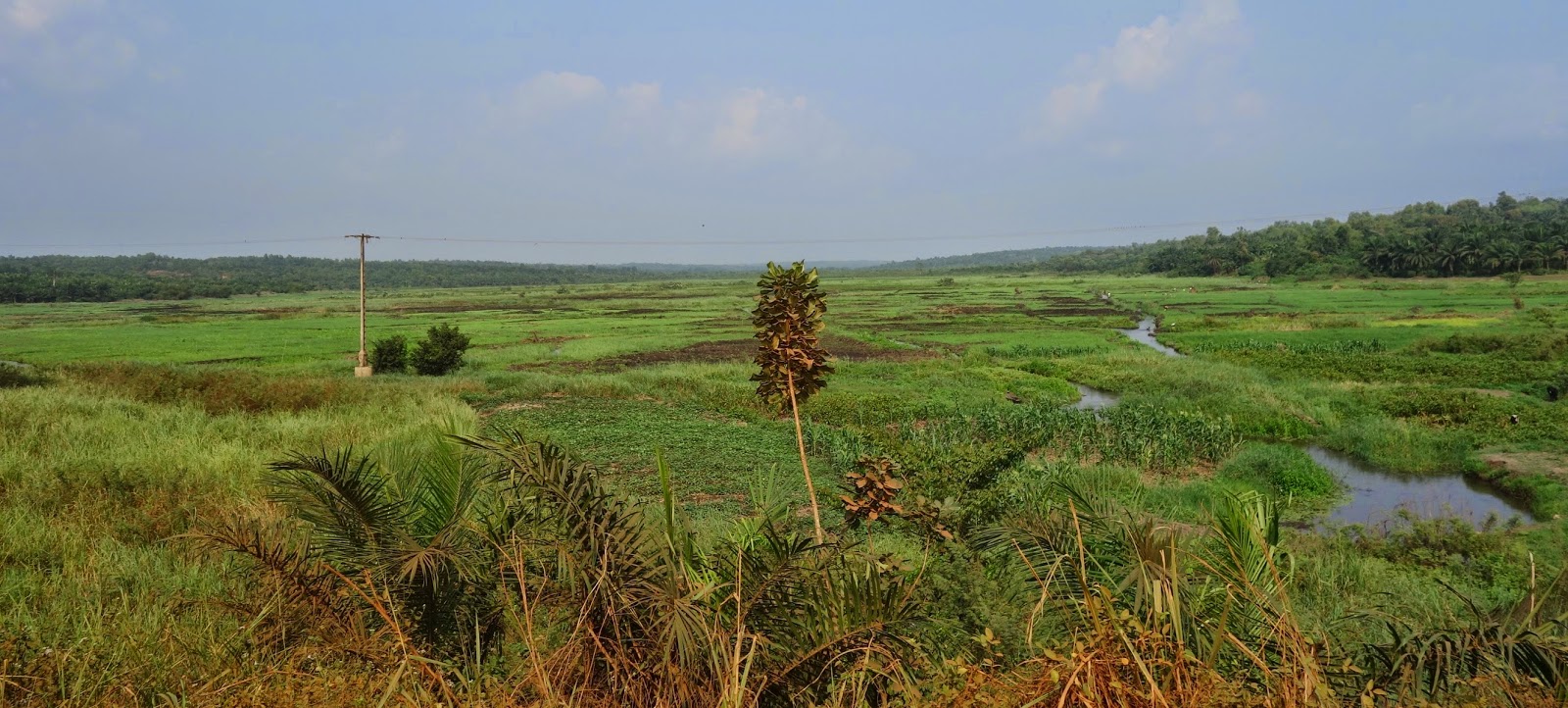Abomey and Bohicon, Benin (part 2)
The second day of our weekend trip was on solid ground. The main attraction was a UNESCO world heritage site, which consisted of some of the palaces of the kings of Dahomey. History of the Kingdom of Dahomey
The Kingdom of Dahomey lasted roughly 300 years, with colonization by the French happening around 1900. Dahomey was a major player in the West African slave trade up until the mid-1800s, when the British navy formed a blockade to end it. Throughout those years before the end of the slave trade, Dahomey was a formidable and fearsome force to reckon with. Their warriors were ruthless, if they weren't it might mean their own death or being captured and forced into slavery.
We
were unable to take pictures during almost all of the tour, so I've
found a couple resources for you to scan through or watch.
 |
| http://www.google.com/imgres?imgurl=http://whc.unesco.org/uploads/thumbs |
The following pdf is excellent to look through. The pictures are colorful and the text is informative. Don't be intimidated by it.
Getty Center - Palace Sculptures of Dahomey
One of the tasks for the archaeologists to accomplish during their month-long stay in Abomey was to construct a transform a small building within the palace compound into a mini-museum, that shows the history of the area. One of the archaeologists, Nicolai, is also a skilled carpenter, so he was tasked with getting the museum up and running.
 |
| Klavs and Nicolai outside the mini-museum. |
We also learned about the women warriors of Dahomey, fearsome fighters and perhaps privileged wives of the kings.
 |
| Ha! Here I am at the guest house we stayed at with a bas relief of a woman warrior. |
 |
| These men are descendents of the royal artisans that served the kings of Dahomey. They had set up there wares along with applique and weaving artisans in the open market just outside of the royal palaces. |
I also want to tell you about the guest house we stayed at in Abomey. Fortunately for us, there were rooms available in the same area as the archaeologists. Chez Monique didn't have running water (can you say bucket shower?), air conditioners that worked (but the ceiling fan did), or a mosquito net (it's not the rainy season right now anyway), but it was a beautiful setting, really. And it cost us only $18!
 |
| The rooms surrounded this beautiful, green courtyard. (CJ) |
 |
| Outside all of the rooms were painting, carvings or bas reliefs. Some had these incredibly carved and large chairs. They weren't very comfortable, though. |
|
 |
| We're not sure what the bas relief on the wall behind us means. Sort of reminds me of The Ear, the Eye, and the Arm, by Nancy Farmer. (CJ) |
Last, but not least, I want to share some more photographs that Craig took in the main courtyard of Chez Monique. As we walked through it, we came upon some incredible, one-of-a-kind carvings and masks. Most were very old and weathered, with a few newer ones scattered around. We didn't have (take?) the time to peruse the shop where some items were sold, but if we have a chance to go back to Abomey, we'll definitely stop in and buy something.
.jpg) |
| (CJ) |
.jpg) |
| (CJ) |
.jpg) |
| (CJ) |
.jpg) |
| (CJ) |
.jpg) |
| (CJ) |
 |
| (CJ) |
.jpg) |
| (CJ) |
.jpg) |
| (CJ) |
.jpg) |
| (CJ) |
.jpg) |
| (CJ) |
 |
| (CJ) |
.jpg) |
| (CJ) |
 |
| (CJ) |
 |
| (CJ) |
 |
| (CJ) |
 |
| (CJ) |
Our journey back to Cotonou on Sunday was much less eventful than on Saturday. We stopped in various villages to purchase items, including oranges, peanut butter, and even gasoline from the side of the road!
 |
| You can't see it from the picture, but the woman was quite pregnant. I don't think anyone had ever taken a picture of her pouring gasoline before! |






.jpg)
.jpg)
.jpg)
.jpg)
.jpg)

.jpg)






.jpg)
.jpg)
.jpg)

.jpg)

















